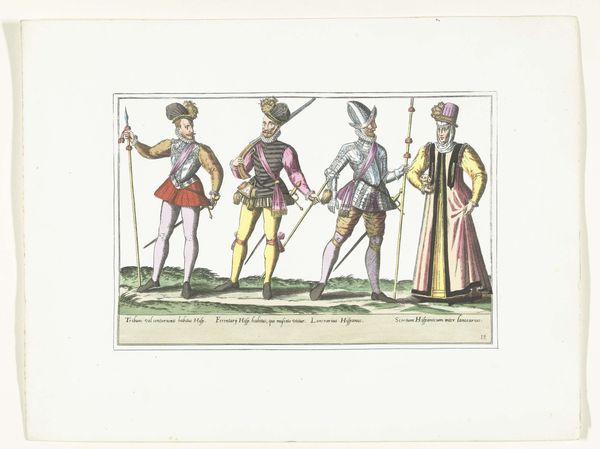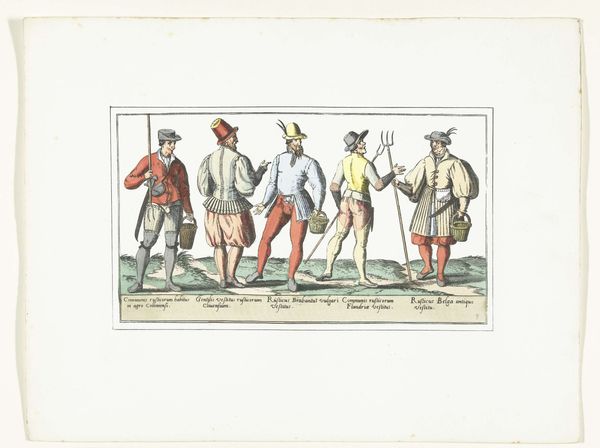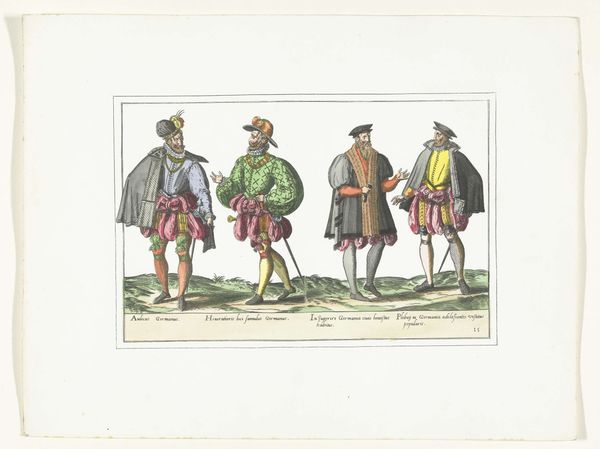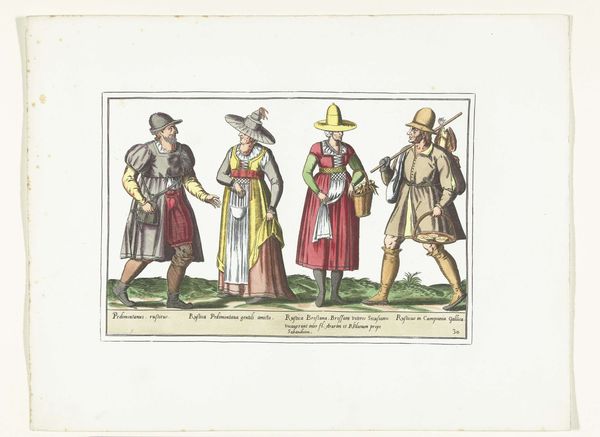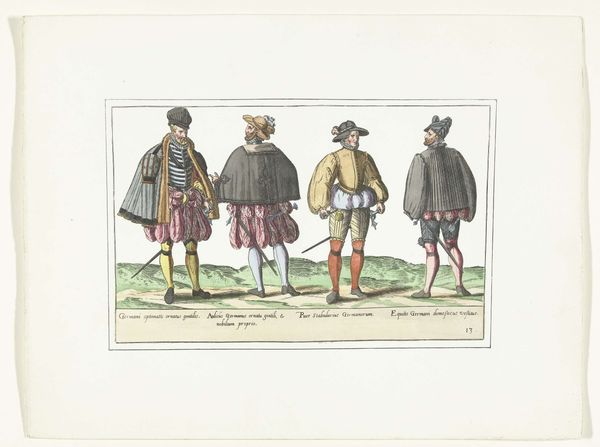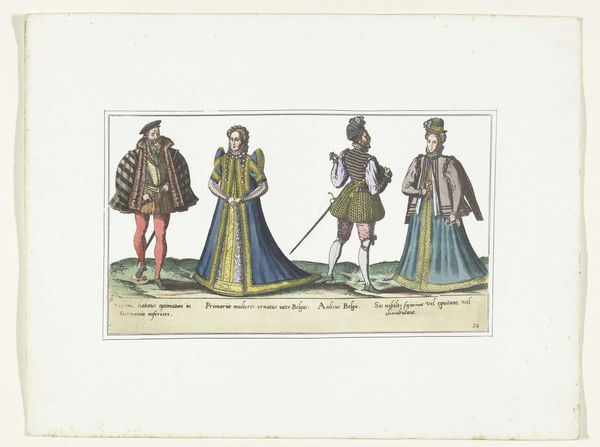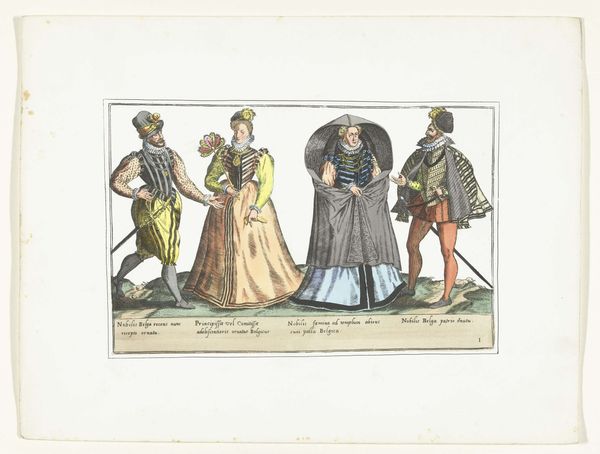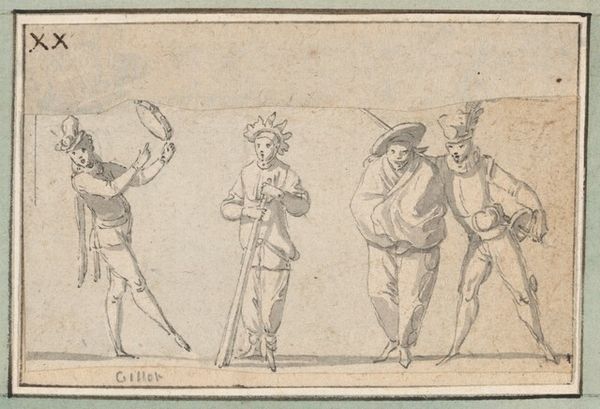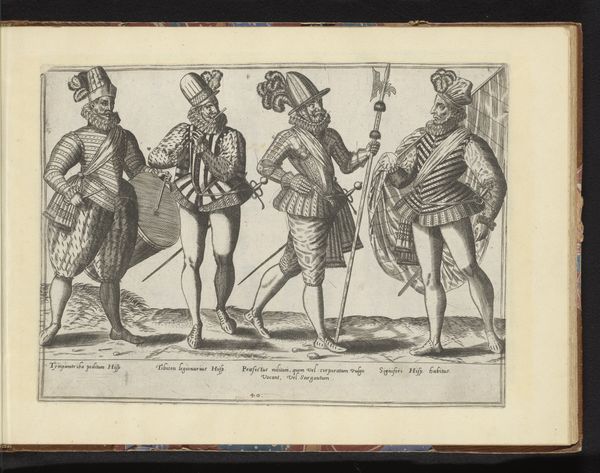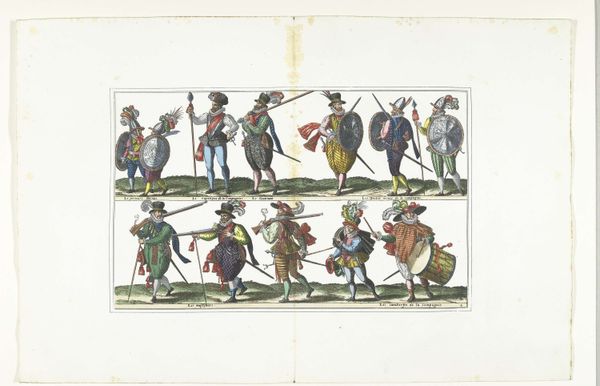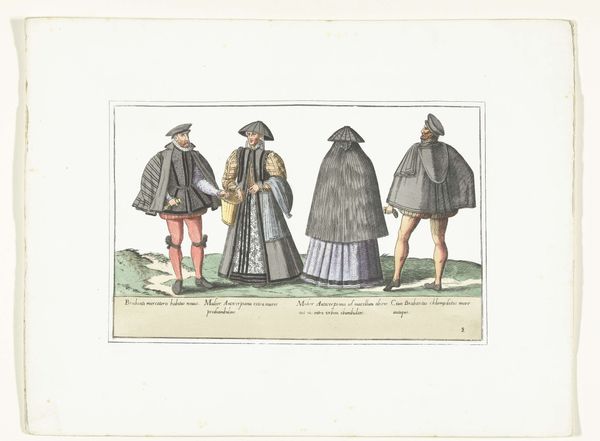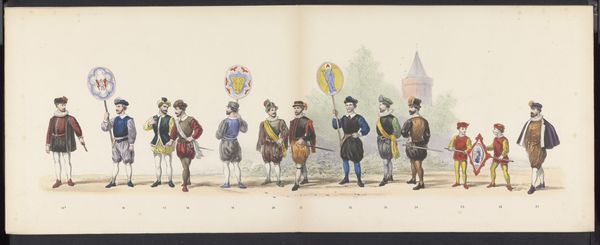
print, etching, engraving
#
portrait
#
medieval
# print
#
etching
#
watercolour illustration
#
genre-painting
#
history-painting
#
engraving
Dimensions: height 274 mm, width 360 mm
Copyright: Rijks Museum: Open Domain
Curator: Before us we have a print entitled "Vier Spaanse militairen in uniform, ca. 1580," which translates to "Four Spanish Soldiers in Uniform, ca. 1580." Though created anonymously, this etching and engraving was rendered sometime between 1872 and 1875. Editor: The uniformity of the costumes is striking! I immediately notice the pageantry but can't ignore the military might—it gives off a somewhat tense aura despite the almost theatrical nature of the figures’ garb. Curator: Indeed, there's a palpable tension in their postures, isn't there? The piece really thrives on contrasting elements. Each figure, distinguished by individual flair within the bounds of military attire, conveys both rigid hierarchy and personal assertion. Editor: Yes, I see your point. Their costumes simultaneously reflect an aristocratic hierarchy and obscure individual identities. Given the time period represented, and that this image was created much later, how much does it idealize or critique notions of militaristic and colonial power? Curator: Well, the image provides clarity through linear precision and compositional balance; each soldier is meticulously detailed. Their garments' sharp lines and structured adornments emphasize formal rigidity. Editor: This visual clarity normalizes a specific kind of authority, but how does that reflect in its moment of making in the 1870s? Was this a nostalgic re-envisioning of imperial Spain during a period of nationalism, or something else entirely? What stories do these images tell about class and power? Curator: The composition holds clues. We observe careful rendering in each figure and their individual embellishments – the ruffs, sashes, weaponry. Editor: Precisely—a visual language that tells us about status through attire. By focusing our analysis on the social dynamics encoded in their depiction, the visual precision offers insights beyond pure aesthetics. This piece shows that the past and the present are inextricably linked and can be seen by considering the role of cultural symbols and narratives in shaping identity and power relations. Curator: Ultimately, considering all the complexities we've just discussed, I can truly appreciate the image anew—acknowledging how careful, formal composition can still create diverse avenues of insight. Editor: Agreed, these figures present a compelling reminder that history, aesthetics, and society remain in constant dialogue. Thank you!
Comments
No comments
Be the first to comment and join the conversation on the ultimate creative platform.
